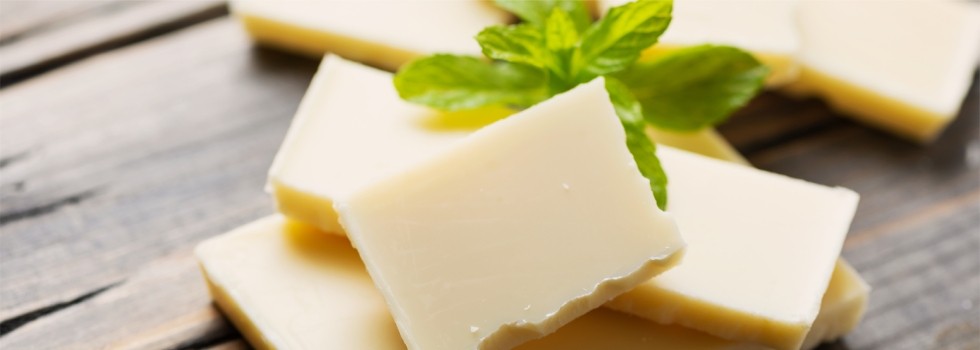Promotional Features
How white compound coating made with plant-based ingredients unlocks growth opportunities
Asian consumers are demanding more from compound coating. Increasingly, people want compound that is made from plant-based ingredients but are unwilling to compromise on the sensory experience. The demands create challenges for manufacturers that work with white compound, an ingredient with properties that stem from the use of animal products. Now, manufacturers can finally meet those demands using white compound coating made with plant-based ingredients.
Demand for certain categories of plant-based products and ingredients is tipped to grow 200% over five years, reflecting the effect of mounting environmental, ethical and health concerns on the diets of Asian consumers.1 Yet, those concerns are rarely persuading people to adopt vegan diets. Typically in Asia, the worries manifest in flexitarianism, resulting in a fast-growing group of consumers who seek out products made from plant-based ingredients but remain open to buying foods that lack a vegan label.2
One study found 62% of consumers in Asia Pacific are interested in buying plant-based alternatives and 44% of people intend to increase their consumption of such products.3 The figures show the number of people interested in reducing their consumption of animal products far exceeds the size of the vegan population in Asia Pacific, where less than 10% of people follow the diet.4
The demographics of plant-based eating mean the number of people who are avoiding animal products is set to rise over time. Plant-based eating is most common in the 15 to 29 and 30 to 44 age groups.5
Those groups are tipped to cause the market for vegan confectionery, which was valued at $816 million in 2019, to have a compound annual growth rate of 11.8% from 2020 to 2027.6 The growth reflects the fact that 60% of Gen Z consumers now expect food brands to offer plant-based options.7 Brands are yet to adequately address the demand, with less than half of consumers being happy with the current milk chocolate alternatives.
Lactose intolerance is another major driver of demand for compound coating made from plant-based ingredients, particularly in Asia. In communities of adults of East Asian descent, 70% to 100% of people are affected by lactose intolerance.8
Developing a new white compound coating
Plant-based compound is already readily available in Asia and other parts of the world, but the selection is severely limited. Dark couverture compound that contains a high percentage of total dry cocoa solids is often inherently free from animal products. However, white and milk chocolate contain animal products, meaning manufacturers need to adopt plant-based alternatives to adapt to consumer demands.
The presence of animal products in white and milk compound presents problems for the growing number of consumers who want to eat confectionery made solely from plant-based ingredients. White compound is particularly popular in Asia, where consumers are less familiar with the bitter flavors of dark chocolate now in favor in North America and Europe, but the inclusion of animal products can deter people.9
When consumers avoid white chocolate and compound coating because it contains milk products, it limits their consumption of a wide range of foods. White compound is a vital part of a variety of foods, with manufacturers using it to coat their biscuits and protein bars, in pastries and cakes, and for enrobing and molding in confectionery.
The wide breadth of applications of white compound increases the challenge of creating a version made with plant-based ingredients. Alternatives to white compound need to do more than just look and taste like the original; they also need to have similar melting properties and other performance characteristics to make it easy for manufacturers to reformulate their products.
Freyabadi Indotama has risen to that challenge. Using plant protein and soluble fiber to replace milk, the Indonesia-based company has created a white compound coating made with plant-based ingredients for the Asian market. The product performs the same as conventional white compound coating when used across a wide range of applications including biscuits, bars, pastries and cakes.
Those properties open doors to manufacturers. By partnering with Freyabadi, manufacturers can deliver the taste, texture and appearance consumers expect from white compound coating using plant-based ingredients, positioning them to cater to both the ethical concerns and sensory desires of confectionery buyers.
References
1. Ferrer, B. Plant-based demand in Asia will surge over 200% in next 5 years, says DuPont N&B. FoodIngredientsFirst (2020).
2. Wong, J. Vegan diets are doomed to fail in Asia – flexitarianism is the sustainable, healthy plant-based alternative you can stick to. South China Morning Post (2021).
3. AsiaFoodBeverage. Flexitarians drive demand for meat alternatives in Asia as consumers seek tastier and more sustainable options. Asia Food Beverage Thailand (2021).
4. WHAT’S IN OUR FOOD AND ON OUR MIND.
5. Rees, T. Plant-based producers have demographics on their side. Euromonitor (2021).
6. Bite sized: Rise of the plant-based snacking sector. FoodBev Media (2021).
7. Myers, A. Global study shows 60% of Gen Zs expect plant-based chocolate as Veganuary hits new milestone. confectionerynews.com (2022).
8. Lactose intolerance.
9. Sherred, K. White chocolate market poised to grow by $1.8bn in next five years. confectionerynews.com (2019).


